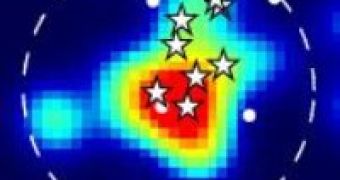Astronomers discovered a new dwarf galaxy formed in a region of space outside our system, which is falling into our "Local Group." It's the first time when such an event has been recorded and it's considered a vital clue on the formation processes of galaxies.
The Local Group is the group of galaxies that includes our galaxy, the Milky Way. The group comprises over 30 galaxies, with its gravitational center located somewhere between the Milky Way and the Andromeda Galaxy. The galaxies of the Local Group cover a 10 million light-year diameter and have a binary shape.
Dr. Scott C. Chapman of the University of Cambridge, Institute of Astronomy, is the lead author of the study, and he and his team were the first to observe the dwarf galaxy, which they named Andromeda XII and its surprising fall into the Local Group.
Surprising because dwarf galaxies, remnants of galactic merging events from which the bigger galaxies, like our Milky Way, have formed, should form along a web of filamentary structures in the universe and then gradually fall into dense groups and cluster environments. While these dwarf galaxies should be observed falling into the Local Group more often, so far this is the first observation of such an event.
"Other Local Group dwarf galaxies are thought to have extreme orbits, including Leo I, Andromeda XIV and Andromeda XI, but Andromeda XII really stands out as a contender for a new entrant into the Local Group," said Chapman. "The others have likely already been seriously harassed by Andromeda and the Milky Way."
Andromeda XII was nicknamed the "Olympian Galaxy" after the Twelve Olympians, the principal gods of the Greek pantheon, residing atop Mount Olympus and it was discovered during a wide-field survey taken with the Canada-France Hawaii Telescope's "MegaCam" instrument.
The faintest and lightest dwarf galaxy ever observed near the Andromeda Galaxy (M31) is the smallest star system showing evidence for a substantial amount of dark matter.
"Andromeda XII may be the first galaxy of the local group ever observed that has not yet been disrupted by the strong gravity of the Local Group," said Dr. Jorge Penarrubia of the University of Victoria, a co-author of the study.

 14 DAY TRIAL //
14 DAY TRIAL //